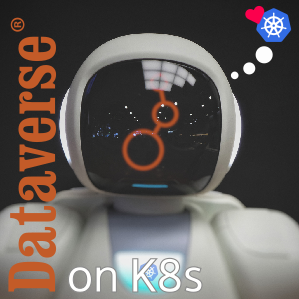Getting started¶
The dataverse project describes itself as:
Dataverse is an open source web application to share, preserve, cite, explore,and analyze research data. It facilitates making data available to others, andallows you to replicate others’ work more easily. Researchers, journals, dataauthors, publishers, data distributors, and affiliated institutions all receiveacademic credit and web visibility.
Introduction: what’s this all about?¶
This project aims at offering a new way to deploy, run and maintain a Dataverse installation for any purpose on any kind of Kubernetes-based cloud infrastructure.
You can use this on your laptop, in your on-prem datacentre or public cloud. With the power of Kubernetes, many scenarios are possible.
Prerequisites: First things first.¶
Before you start deploying, make sure to look at the following checklist:
If you never touched a commandline, never thought about why using cloud infrastructure might be a good idea: maybe you should stick with the old, but paved and solid ways of installing complex applications like Dataverse.
Keen to learn new technology? Be part of the future? Want to streamline CI/CD and your application? Continue.
You will at least need:
Depending on your use-case and targeted environment that might be just it. If something else is necessary, it’ll be documented in its respective documentation part.
If you never used Kubernetes, but want to deploy to production, you definitely should be reading some docs first. Some starting points:
- https://kubernetes.io/docs/tutorials/kubernetes-basics/
- https://ramitsurana.github.io/awesome-kubernetes
- https://kubernetes-on-aws.readthedocs.io/en/latest/admin-guide/kubernetes-in-production.html
You’ll need a running and fully configured Kubernetes cluster.
- Local options:
- Deploy your own (production) cluster. Many tools to choose from. Examples:
- Use a hosted solution. Some example services at
When you want to register datasets and/or files in your deployment to DataCite, EZID or similar, you will need active accounts. Be sure to have access credentials around. As an alternative, you might want to use the FAKE provider.
See also
For more information on Dataverses supported providers:
Use Cases: What installation persona are you?¶
1. Demo time!¶
Demos provide showcases what Dataverse can do for you. Currently pre-packaged:
- Local
- Using
minikube, see Using minikube persona - Using
k3s, see Using k3s.io persona
- Using
- Cloud-based
- Using
kopson Amazon EC2 VMs, see demo/aws-kops
- Using
2. Developing is my thing¶
There is an entire section in this guide dealing with how to use this project for developing Dataverse, run development snapshots for tech demos, etc.
Please go to development docs here.
3. Gimme the production stuff¶
Todo
This needs yet to be refactored.
You should make yourself familiar with a series of documentation articles, linked below:
- [Container images](https://github.com/IQSS/dataverse-kubernetes/blob/master/docs/images.md)
- [Persistance storage](https://github.com/IQSS/dataverse-kubernetes/blob/master/docs/storage.md)
- [Detailed insight into inner workings](https://github.com/IQSS/dataverse-kubernetes/blob/master/docs/how-it-works.md)
- [Using Kubernetes descriptors from this project](https://github.com/IQSS/dataverse-kubernetes/blob/master/docs/reuse.md)
- [Configuration of Dataverse](https://github.com/IQSS/dataverse-kubernetes/blob/master/docs/config.md)
- [Secrets usage](https://github.com/IQSS/dataverse-kubernetes/blob/master/docs/secrets.md)
- [(Custom) Metadata Blocks](https://github.com/IQSS/dataverse-kubernetes/blob/master/docs/metadata.md)
- [Maintenance Jobs and Little Helpers](https://github.com/IQSS/dataverse-kubernetes/blob/master/docs/little-helpers.md)
Please be aware that this project currently only offers images and support for basic usage. Integrations are not yet part of this, but may be added as needed. See also relevant docs within Dataverse guides and upstream projects.
4. Integrate yourself!¶
One of the true superpowers of Dataverse is its ability to integrate with external tools. Previewers, data analysis, data capturing and many more await you.
Hint
Currently, none of these are supported or maintained by this project, although this is a mid-term goal. If you feel a need, raise an issue. You are most welcome to contribute.
